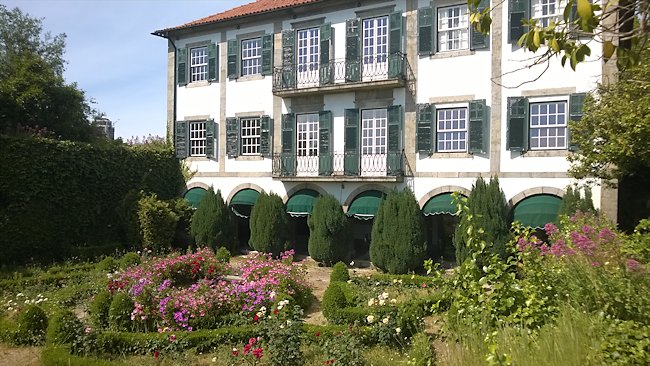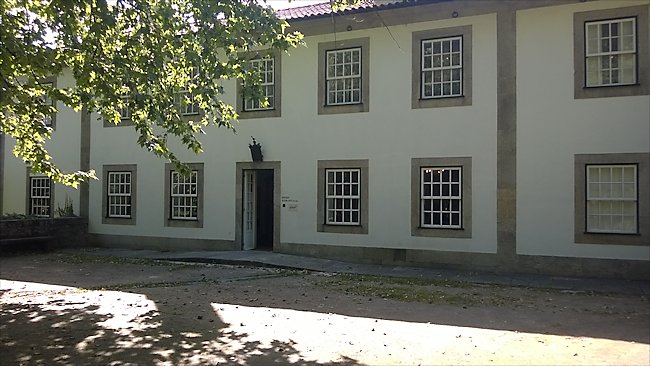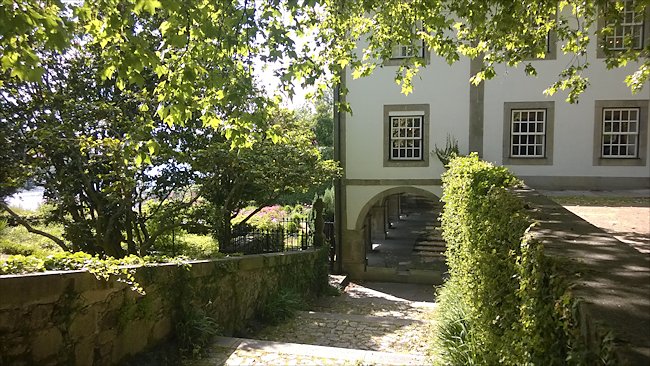Museu Romantico - Porto's Romantic Museum
You will find the Romantic Museum at 220 Rua de Entre-Quintas very near the Crystal Palace Park and Gardens to the west of the city centre. As you go down hill from the main road you come to a fork. Go through the large green iron gates on the left that have two wrought iron lanterns affixed one to the top of each stone gate post. The number 220 in black numbers is on the right stone post just under the lamp. The smaller green gate on the right is the entrance to the Case Tait English style garden which you should visit afterwards.

The Garden of the Museu Romantico da Quinta da Macieirinha in Porto
The Romantic Museum, sitting on top of the hill on the north side of the river Douro in Porto Portugal, is a fine example of a rich merchant's house. It has been restored and now open to the public. Entrance is by guided tour only. You have to wait until the next tour in your language begins but there is a nice garden to look around whilst you are waiting. There is an option to use Audio guides but you still have to stay in an escorted group. You can not go at your own pace. Be patient. There are information sheets in different languages in each room.
The merchant family that built the house sold it to a port wine multimillionaire Antonio Ferreira Pinto Basto. He became heavily involved in politics and transformed the building into his family's summerhouse. Local council now own the building. In 1972 it was fully renovated and open to the public. The goal of the museum is to give the public a better understanding of the life of the bourgeoisie in the 19th century in Portugal.

The front courtyard and entrance to the Romantic Museum in Porto
Porto's merchants became very rich through international trading. The interior of the house reflects that wealth in its exquisite design and opulent furnishings. Some of the rooms were literally fit for a king. The king of Piedmont and Sardinia King Carlos Alberto lived in the house for a number of years after he lost his throne. One of the rooms is called the 'King's room' in his honour. He passed away in the house 28th July 1849.
If you're looking for love stories or an exhibition on the history of romance through the years, you will be disappointed. Romanticism is a period of history. It was a reaction to the industrial revolution and generally occurred between 1800 and 1850. Romanticism glamorised medievalism and intense emotions. It was a move away from the classical influence of Rome and Greece on building design, art, interior decoration and furniture.

Access to the garden of the Museu Romantico
Young men of noble birth in the 1700s were expected to finish their education by going on the grand tour to Italy and Greece. The Napoleonic wars put a stop to this. People became patriotic and looked back in time to the period of chivalry, knights in armour and damsels in distress.
Unfortunately the house does not contain a lot of Pre-Raphaelite or other romantic influenced works of art. All the best pieces are in national museums around the world. You are taken around the Ballroom, a Dressing Room, a Billiard Room, a Dining Room, a Guest Room and the Nursery. I found the house fascinating. It gave you a glimpse of how the rich wine merchants lived in the 1800's in Porto and how it contrasted sharply with the workers living in small houses built on the cliff-side.
Travel books

